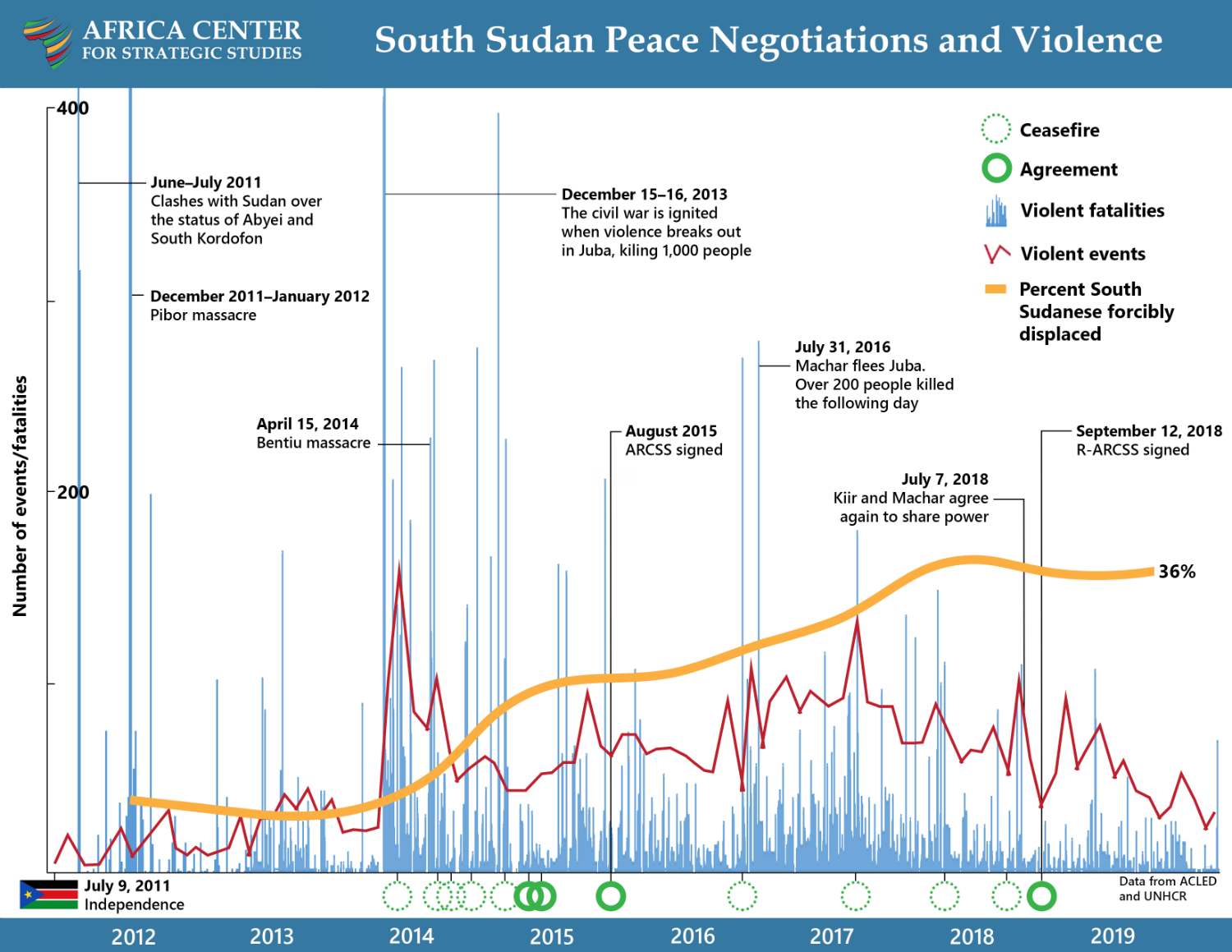Since its inception, South Sudan’s governing structure has been based on the principle of power-sharing. However, the inability of the country’s leaders to share power has been a defining feature of South Sudan’s governance and is at the heart of its ongoing conflict.
- A steady level of fighting, averaging over 800 violent events per year since 2013, has persisted since the start of the war, resulting in an estimated 400,000 deaths.
- Many ceasefires have been immediately followed by sharp spikes in violence.
- The number of people who have been forcibly displaced has continuously increased since the start of the war revealing the cumulative humanitarian impact from instability.
- Four million South Sudanese—a third of the population—are displaced from their homes. This compares to 2.3 million when the Agreement for the Resolution of the Conflict in South Sudan (ARCSS) was signed in 2015 and 800,000 at the beginning of the conflict in 2013.
- Two-thirds of the population—7.5 million people—is in need of humanitarian assistance, up from 2.2 million in 2013. This includes an increase of 500,000 since the signing of the Revitalized Agreement on the Resolution of the Conflict in South Sudan (R-ARCSS) in 2018.
- The price of staple crops in Juba, Aweil, Rumbek, Wau, and other major markets has increased by 1,000-4,800 percent since the war began.
- Salva Kiir was elected president of the region of Southern Sudan in 2010 and inherited the presidency upon the country’s independence in 2011 under a clause in the Transitional Constitution of the Republic of South Sudan. The constitution authorized a 4-year presidential term and a 2-term limit. There have been no presidential elections in South Sudan since 2010. Still, Salva Kiir remains in power.
- Riek Machar was appointed vice president in 2011 as part of a transitional unity government, but was dismissed with the rest of Kiir’s cabinet later that year. Subsequent power-sharing agreements between Kiir and Machar in 2013, 2015, 2016, and 2018 have not held. Since the war began, Machar has spent a total of about 4 months in South Sudan.
Additional Resources
- Wendy Williams, “Shifting Borders: Africa’s Displacement Crisis and Its Security Implications,” Research Paper No. 8, Africa Center for Strategic Studies, October 17, 2019.
- Klem Ryan, “Taking Stock of the Revitalized Agreement on the Resolution of the Conflict in South Sudan,” Spotlight, Africa Center for Strategic Studies, January 12, 2019.
- Africa Center for Strategic Studies, “Envisioning a Stable South Sudan,” Special Report No. 4, May 29, 2018.
- Kate Almquist Knopf, “Fragility and State-Society Relations in South Sudan,” Research Paper No. 4, Africa Center for Strategic Studies, September 2013.
More on: South Sudan


